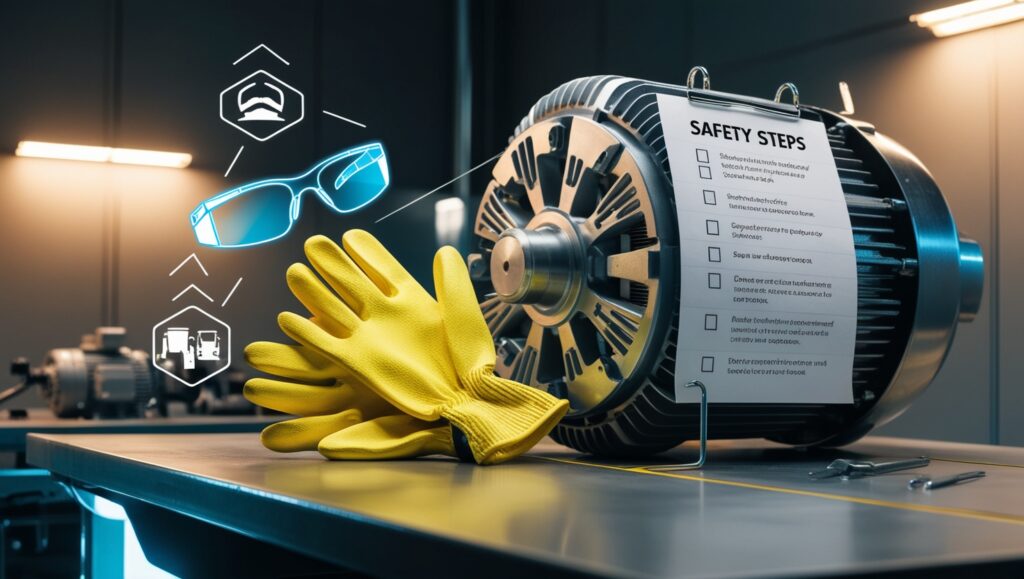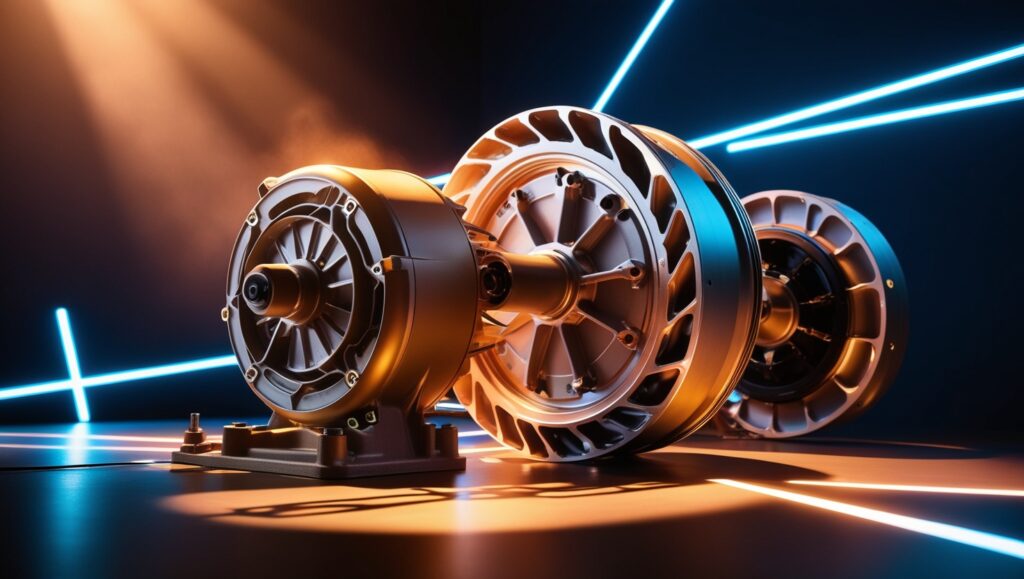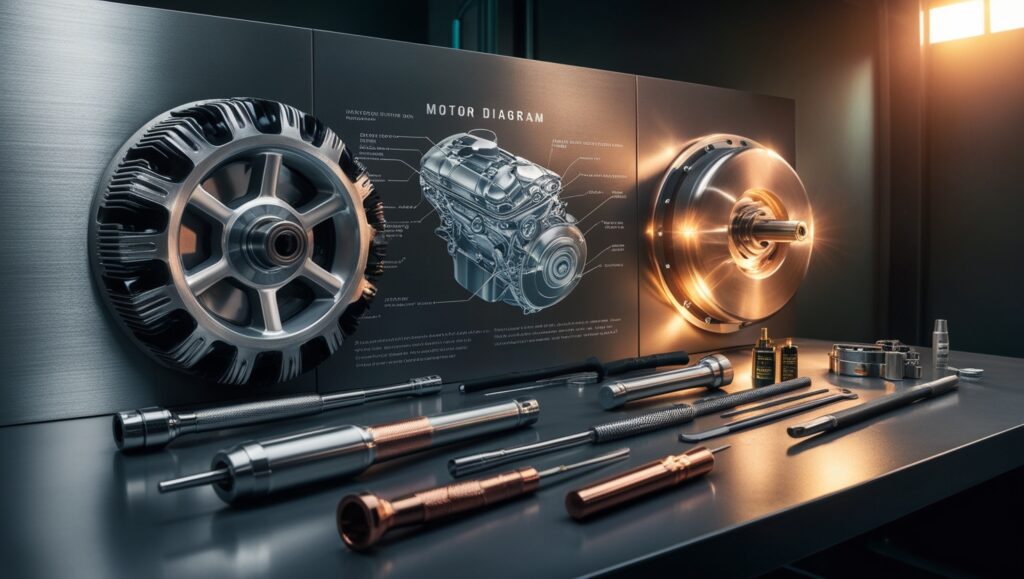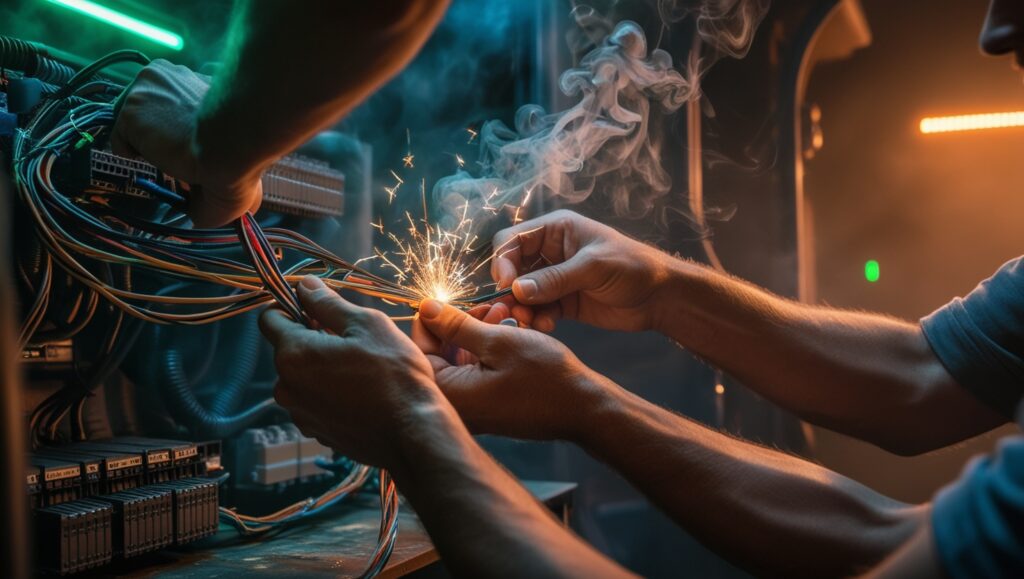Maintaining electric vehicle motors is crucial for ensuring optimal performance and longevity. This step-by-step guide to electric motor maintenance will help you understand the essential aspects of how to maintain electric vehicle motors, from inspection to cleaning and testing. By following these detailed instructions for EV motor maintenance, you’ll keep your EV running smoothly and efficiently.
Proper electric vehicle motor maintenance not only enhances your vehicle’s reliability but also prevents costly repairs down the line. Whether you’re a seasoned EV owner or new to the world of electric vehicles, this guide is designed to provide you with all the necessary knowledge to maintain your electric motor effectively.
Understanding Electric Vehicle Motors: An Overview

Electric vehicle motors are the heart of any electric vehicle, converting electrical energy into mechanical energy to power the vehicle. Understanding electric vehicle motors is essential for maintaining and troubleshooting your EV. This overview of electric vehicle motors covers the two primary types: AC motors in electric vehicles and DC motors in electric vehicles. Each type has its advantages and applications.
AC motors in electric vehicles are known for their efficiency and durability, making them a popular choice in modern EVs. Conversely, DC motors in electric vehicles are simpler and more cost-effective, suitable for smaller electric vehicles. Key components of these motors include the rotor, stator, and various control systems that manage performance and efficiency. By gaining a solid understanding of these components and their functions, you can better appreciate how your EV operates and ensure it remains in top condition.
Safety Precautions Before Starting Maintenance

Ensuring safety during electric vehicle motor maintenance is paramount. Before you begin any work, it’s crucial to understand and implement safety precautions before starting maintenance. This guide will help you navigate the essential steps to protect yourself and your vehicle.
Firstly, always disconnect the vehicle’s battery to prevent accidental electric shocks. Wearing appropriate protective gear for EV maintenance, such as gloves and safety glasses, is also necessary. Make sure you have a well-ventilated workspace to avoid inhaling harmful fumes. Additionally, familiarize yourself with the safety guidelines for EV maintenance and the tools required for the maintenance process. Understanding these precautions can significantly reduce the risk of injury and damage.
By following these safe EV maintenance practices, you ensure a safe and efficient workflow. This not only protects you but also enhances the longevity and performance of your electric vehicle. Remember, safety first!
Step 1: Inspecting the Motor Components

The first crucial step in electric vehicle motor maintenance is inspecting the motor components. This initial inspection ensures that all parts are functioning correctly and identifies any potential issues before they become serious problems. Begin by conducting a thorough motor housing inspection for any signs of wear or damage. Look for cracks, corrosion, or any foreign objects that could interfere with the motor’s operation.
Next, perform a rotor and stator inspection for signs of wear or overheating. Additionally, check the electrical connections in EV motors for loose or frayed wires, which could cause electrical failures. It’s also essential to review the EV cooling system maintenance, ensuring there are no blockages or leaks that could impact the motor’s performance.
Thoroughly inspecting these components helps maintain the motor’s efficiency and longevity. Regular inspections are a vital part of EV motor maintenance and can prevent costly repairs down the line.
Step 2: Cleaning and Lubricating the Motor

In electric vehicle motor maintenance, Step 2 focuses on cleaning and lubricating the motor, essential for ensuring peak performance and longevity. Begin by carefully implementing motor cleaning techniques to remove accumulated dust, dirt, and debris from the motor components. This process helps prevent corrosion and maintains optimal function over time.
Next, lubrication of EV motors is critical for reducing friction and wear on moving parts such as the rotor and bearings. Use recommended lubricants to maintain motor performance under various operating conditions. Proper motor care tips like these not only enhance efficiency but also extend the lifespan of your EV motor.
Regular maintenance of cleaning and lubricating the motor is key to sustaining its reliability and efficiency. By incorporating these practices into your routine electric vehicle motor maintenance, you ensure your vehicle operates smoothly for years to come.
Step 3: Checking Electrical Connections and Wiring

In electric vehicle motor maintenance, Step 3 is crucial: checking electrical connections and wiring ensures both reliability and safety. Start by inspecting all electrical connections for wear, corrosion, or looseness. Secure any loose connections and replace damaged wiring to prevent potential electrical failures.
Next, scrutinize the EV wiring for signs of fraying or exposed wires that could cause short circuits or operational issues. Ensure each connection is properly insulated against moisture and environmental elements. Testing for electrical continuity in EV motors verifies functionality and mitigates future problems.
Regularly monitoring and maintaining these electrical connections is essential for maintaining optimal performance and safety in your electric vehicle. By integrating these practices into your electric vehicle motor maintenance routine, you enhance the longevity and reliability of your vehicle’s electrical systems.
Step 4: Testing and Reassembling the Motor

In electric vehicle motor maintenance, Step 4 involves testing and reassembling the motor, crucial for ensuring peak performance and reliability. Begin by conducting thorough motor testing procedures to assess components such as electrical continuity, performance under load, and overall functionality.
After testing, proceed with the reassembling of EV motors following manufacturer guidelines and using appropriate tools. Ensure all parts are securely fastened and aligned to prevent operational issues. Lubricate moving parts as needed to maintain smooth operation and enhance motor performance.
These meticulous motor care tips not only extend the longevity of your electric vehicle but also optimize its efficiency. By incorporating these steps into your electric vehicle motor maintenance routine, you ensure your vehicle operates at its best for years to come.
Conclusion
In conclusion, electric vehicle motor maintenance is essential for sustaining optimal performance and longevity. By following these motor care tips, including inspecting components, cleaning, lubricating, checking electrical connections, and conducting thorough tests, you ensure your EV operates efficiently.
Regular maintenance not only enhances motor performance but also prevents costly repairs and extends the lifespan of your vehicle. Remember to adhere to safety precautions and manufacturer guidelines throughout the maintenance process. With proper care and attention, your electric vehicle will continue to deliver reliable and efficient performance for many miles ahead.

Hi i think that i saw you visited my web site thus i came to Return the favore Im attempting to find things to enhance my siteI suppose its ok to use a few of your ideas
Sure) and Thank You!